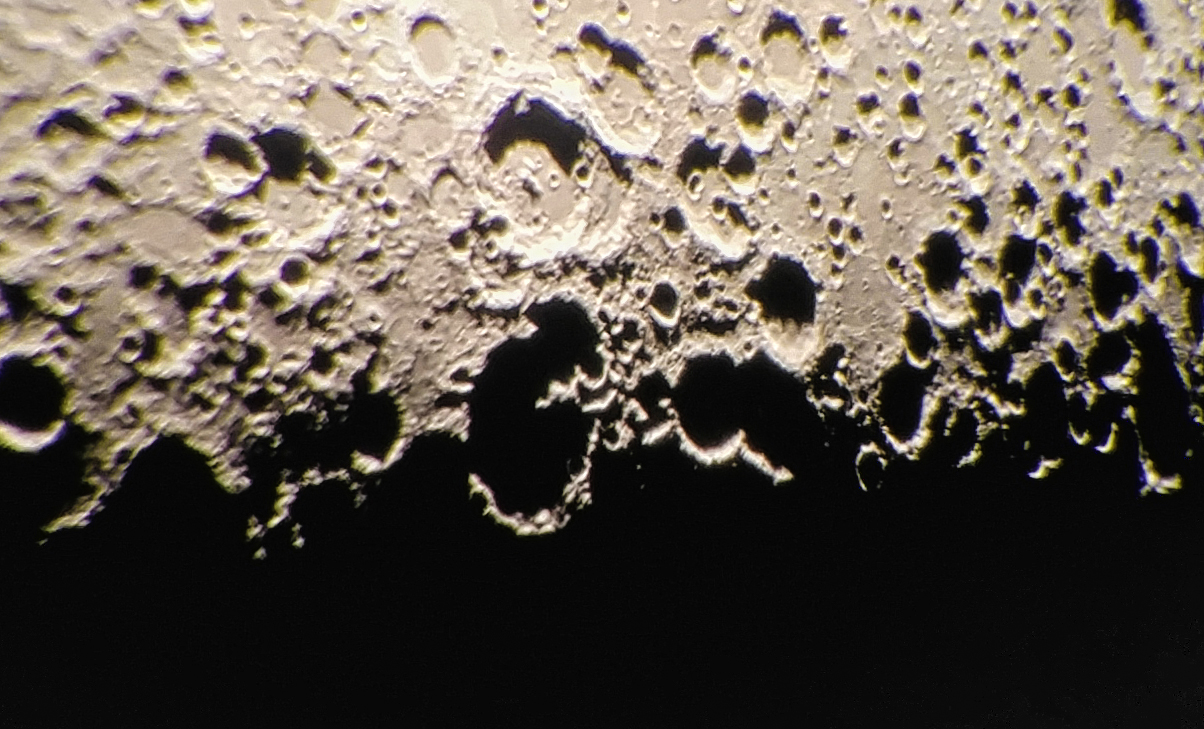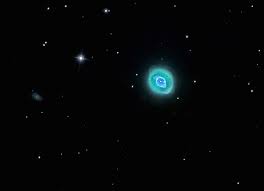
| Observer: | Tom Campbell |
| Location: | College Station, Texas (Long: 96°17'W Lat: 30°37'N) |
| Telescope: | Zhumell 12" f/5 Dobsonian |
| Eyepieces: | Zhumell 30mm (50x) Explore Scientific 18mm (83x) Explore Scientific 11mm (136x) |
| Lenses: | Celestron Luminos Barlow (2.5x) |
| Weather: | The sky was mostly clear. Temperature was in the low 70s (F), with a slight breeze. |
Today was my birthday and I took the day off work so that I'd have more time to spend with my family. The skies were clear all day, but the wind was a bit gusty. I decided that if the winds died down a bit, I'd have a great end to the day by sitting out in the back yard with my telescope.
As sunset came, the winds died down, making for a great ending to the day. As I set up my equipment, the Moon was nearly overhead, so I thought I would begin there.
The Moon was beautiful tonight, half-lit in her First Quarter phase. This is my favorite phase to view the Moon, so while I was waiting for darkness to completely fall, I took aim at our nearest celestial neighbor. The long shadows cast by the sunrise along the terminator gave the craters an intense 3D effect. I held my cellphone up to the eyepiece and snapped a picture.

| Gamma (γ) | Leo | Double Star | 9:20pm CDT |
136X offers a nice view of this double. The stars are close together, with one being a bit fainter. Both are yellow-white, shining like birthday candles in the darkness. |
|||
| h3945 | Canis Major | Double Star | 9:25pm CDT |
Known as the "Winter Albireo," this is probably my last view of it for the season. Despite it sitting low in the evening sky, it is still glorious. 136X shows its beautiful deep orange and medium blue contrast. The blue star seems to be a bit fainter, but that may be due solely to the color differences. |
|||
| NGC 3242 | Hydra | Planetary Nebula | 9:45pm CDT |
 |
Called the Ghost of Jupiter, a low-power (83X) view reminds me much more of Uranus, due to its pale blue appearance. Like a ghost, it fades out near the edges and appears much less solid than a planet. Cranking up the power to 341X, it is still fairly bright and large and some structure can begin to be seen, although all color disappears and it appears a ghostly gray. This planetary nebula is oval and about halfway out from the center is a very bright glowing ring of material. Within this bright ring, I could sometimes detect the central star, popping in and out of view with averted vision. |
||
Jupiter - Io, Ganymede and Callisto were all playing on one side of Jupiter tonight, while Europa shyly hid her face behind the King of Planets. The Great Red Spot was also on the back side of the planet at this time, but Jupiter still had plenty to offer. The image was holding pretty steady, so I kicked up the power to 341X. Several dark brown belts were visible and both equatorial belts had a few dark regions within them. The more I stared, the more details became apparent. Festoons and swirling patterns emerged along the belts. Very impressive!
I glanced up from Jupiter and looked around to see what else I wanted to observe. Unfortunately, about 2/3 of the sky was now covered in thin clouds. Rather than fight them, I decided I would pack it in.
It was a great, relaxing time tonight. My scope was very easy to collimate. The secondary mirror had kept its collimation perfectly (for the first time in a long time), and the primary mirror only needed a couple of tweaks to get it aligned. Likewise, the RACI was holding its position better than it had since I got the telescope.
Everything seemed to be working together tonight to make for a relaxing evening. The bright Moon prevented me from trying to track down any faint galaxies, but I didn't mind because she was stunning tonight. A great ending to a great day!